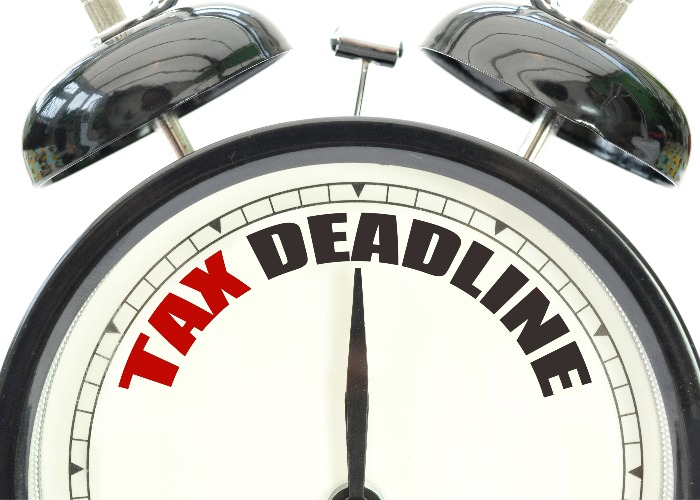ISA, pension contributions, CGT, Inheritance Tax: the end of the tax year

There's not long left of the 2024/25 tax year, but you can still make use of all sorts of allowances and claim rebates.
Nobody holds a party for the end of a tax year the way that you might for a calendar year.
But the truth is that a new tax year is incredibly significant for your money, and then are certain things you might want to do before we hit 2024/25 that will leave you in a healthier financial position in the long run.
Claim tax relief if you work from home
If you worked from home for at least part of each week then you may be entitled to a rebate from the taxman.
Importantly, this only applies to people who have to work from home, rather than those who chose to do so.
You can claim tax relief of up to £6 a week to cover work expenses, which works out to £1.20 for Basic Rate payers or £2.40 for Higher Rate taxpayers.
That means you can claim up to £62 and £124 respectively if you worked from home for part of each week.
You only have until the end of the tax year to claim it though. You can make a claim through the Gov.uk website.
Claim the uniform rebate
Another rebate worth thinking about is the uniform rebate, which is open to anyone who ‒ you guessed it ‒ wears a uniform for work. That covers everyone from shop workers to pilots.
The standard allowance for uniform maintenance is £60. So if you’re eligible, you’ll get back the tax you would have paid on that £60, which for Basic Rate taxpayers works out at £12.
If your uniform costs exceeded the 'flat rate', you can claim more but you'll need to provide receipts as proof.
Importantly you can claim for four previous tax years, as well as the current tax year, so you’ll need to move now if you want to claim back the rebate for the 2020/21 tax year.
Again, you can claim online, this time through the p87 form.
Keep hold of your Child Benefit
The Child Benefit rules were changed recently, so now only couples where both parents earn under £60,000 receive the full amount.
For every additional £1,000 earned, 5% of the benefit is reduced, until you get nothing if one of you earns over £80,000.
If your income is only a little over the £60,000 mark there are ways to reduce it below that threshold so that you continue to receive the full amount, such as by contributing to your pension or making charitable donations.
Make use of your ISA allowance
Everybody gets an annual ISA allowance, which caps how much you can pay into your ISA each tax year.
The current cap stands at £20,000 for the 2024/25 tax year, and you can split that money between different types of ISA, from cash and investment to lifetime ISAs and innovative finance ISAs.
Any unused allowance isn’t carried over either, so make use of while you can before the new tax year starts.
If you’re really flush with cash and have children, then you might want to make use of their annual ISA allowance too. Up to £9,000 a year can be paid into Junior ISAs.
We’ve broken down the different types of ISA and who they might be best for.
Make use of your pension allowance

As with ISAs, there is a cap on how much you can pay into your pension each year. It stands at £60,000 for those earning less than £150,000 a year.
OK, so most of us are going to struggle to pay anything close to that into our pension in a year, but if you are sitting on the money and don’t need it until retirement, then it makes sense to make use of that allowance.
Everything you need to know about pensions
Get some free Government money with a Lifetime ISA
The Lifetime ISA is designed to help two sorts of savers ‒ those looking to build a deposit for a home purchase, and those looking to save for retirement outside of their pension.
And the way it does that is through free cash from the Government, with your balance topped up by 25% by the Government each year, up to a maximum of £1,000.
In other words, by making sure you save £4,000 into your ISA each year, you can get the maximum free money from the authorities.
Check out our guide to Lifetime ISAs.
Make use of your Capital Gains Tax allowance
You pay Capital Gains Tax on the profits made from selling certain assets, but you enjoy an annual allowance on which you don’t pay any tax.
For 2024/25 that allowance stands at £3,000, and you can’t carry any unused portion of your allowance forward, so you may want to make use of it now.
Hand out some Inheritance Tax gifts
One way to reduce your eventual Inheritance Tax bill is to make use of your gift allowance.
Everybody is entitled to make cash gifts of up to £3,000 each year, and these are exempt from the usual rules about having to live a certain period after having gifted assets to loved ones.
This allowance resets with the new tax year.
For more, check out our guide to reducing your Inheritance Tax bill.
Comments
Be the first to comment
Do you want to comment on this article? You need to be signed in for this feature